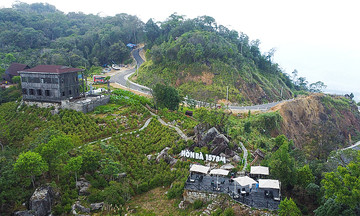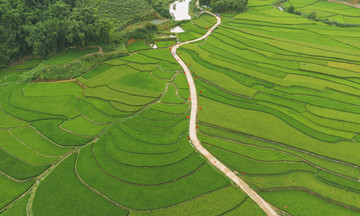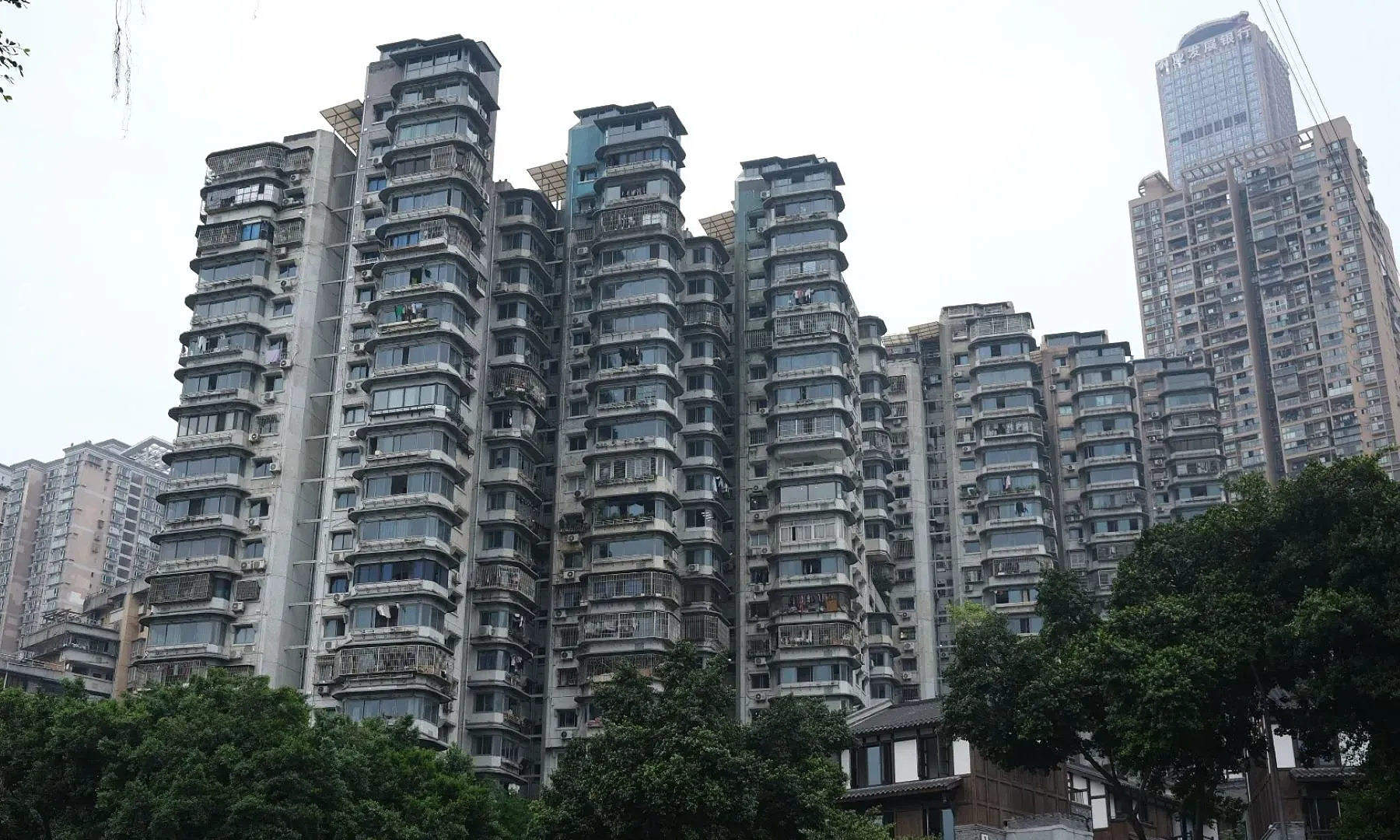 |
From the main entrance of Baixiangju, situated along a bustling Chongqing street, the three-building residential complex appears to be only about 15 stories tall. However, stepping inside the gray complex, built in the early 1990s, reveals a different perspective.
Apartment numbers indicate that units near the main entrance are on the 11th floor, while those at the end of the corridor are on the 16th. Looking down from the walkway connecting the buildings to the entrance, the true height of approximately 25 stories becomes apparent. The lower floors are obscured by the sloping terrain, leading down the hill to other entrances and exits.
This exemplifies why Chongqing is often called "China's 8D magic city". Navigating its buildings can feel like entering a multi-dimensional maze. Photo: Straits Times
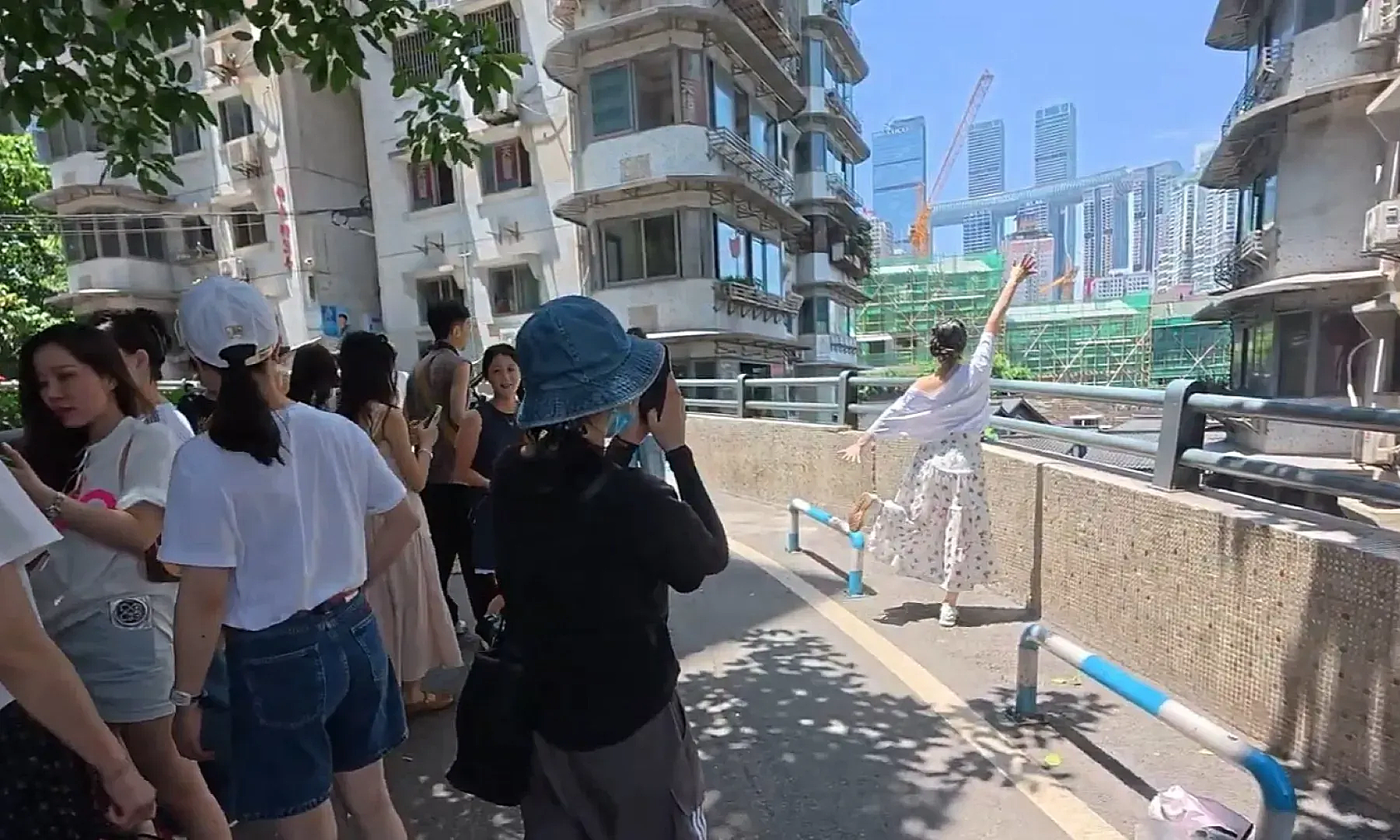 |
The complex, accessible only by stairs and a sloping pathway connecting the buildings, is a popular spot for visitors to photograph Chongqing's iconic architecture.
Chongqing residents often live in high-rise apartments. Many buildings combine residential units on upper floors with offices and services below. These massive structures often block sunlight, casting long shadows over the surrounding area. The late 19th-century urban expansion of China contributed to a Chongqing that often feels short on breathing room.
With about 75% of its land mountainous, Chongqing's urban planners have had to build differently, creating a complex, multi-layered landscape that defies conventional logic yet fuels a thriving metropolis. Photo: Straits Times
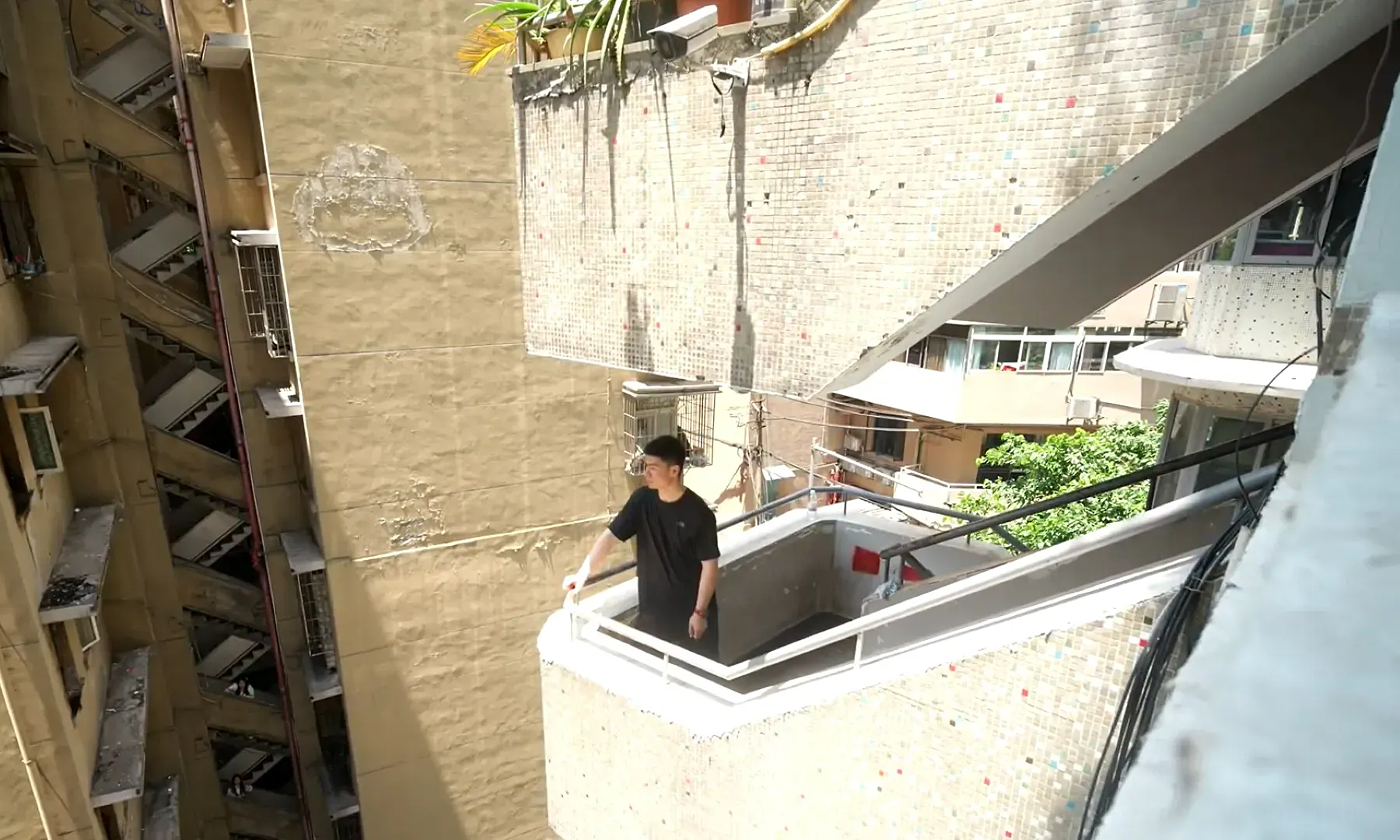 |
Marcus Yeo, a Singaporean who visited Chongqing in June, said that videos couldn't capture the reality of the city's layout.
The concern for visitors isn't the lack of elevators or the height of the buildings, but the confusing network of entrances and exits. One wrong turn can lead them far astray. Photo: Straits Times
 |
The mountainous terrain, nearly double the average for a Chinese city, presents challenges for urban planning, construction, and governance. The city has prioritized public transport, particularly its subway system, which weaves through the hilly landscape to alleviate pressure from the high population density and car ownership.
Pictured is Hongyadong, an 11-story traditional stilt house complex juxtaposed against skyscrapers in the Jiefangbei commercial district. Photo: Bloomberg
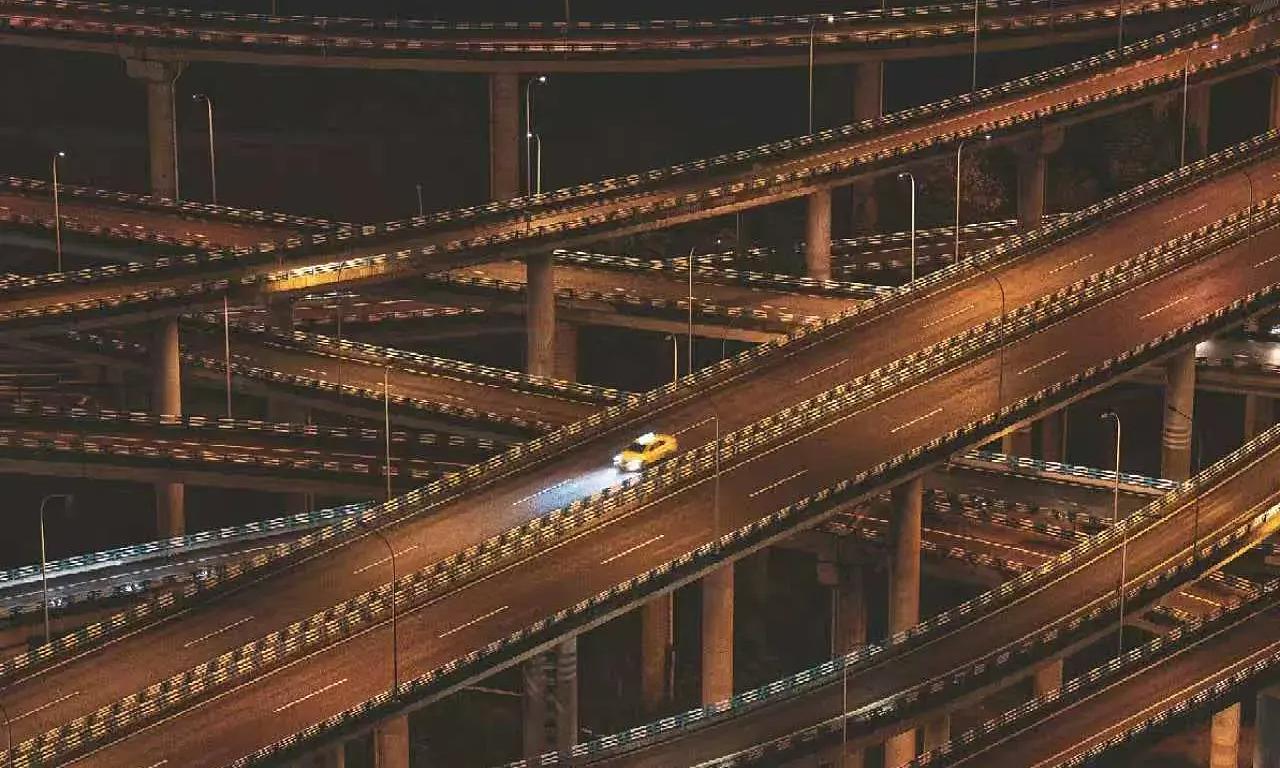 |
The number of bridges in Chongqing has increased from 4,000 in 1997 to over 20,000 today. The five-level Huangjuewan Interchange epitomizes the city's complex transport system.
Professor Huang Jingnan from Wuhan University explained that Chongqing follows a multi-center model. Sub-centers have formed due to natural barriers like mountains and rivers. Shapingba District, for example, is a hub for science, education, and healthcare, housing 16 universities, including Chongqing University. This model ensures a balance between jobs and housing.
The multi-center model allows Chongqing to adapt to its challenging topography. These centers operate independently with integrated functions, not reliant on a single core. The steep terrain and scarce land have encouraged vertical development, making Chongqing a model for mountainous urban areas. Photo: Si Qi
 |
An aerial view shows a parking lot in Chongqing.
Chongqing is a sought-after destination, attracting millions of domestic tourists. According to Trip.com, bookings increased by 131% in 2024, the highest among Chinese cities. International tourist arrivals also rose by 115% compared to the previous year. Photo: AFP
 |
The train line passing through a 19-story building at Liziba Station, where floors 6 through 8 house the station while the remaining floors are residential, is a major attraction. Thanks to soundproofing, residents can live normally despite the train passing close by.
Monorail systems are often employed in densely populated cities, amusement parks, or tourist areas due to their compact design, elevated tracks, and suitability for short routes. Some lines are notable for their unique architecture, such as running through residential buildings or suspended over rivers. Photo: AFP
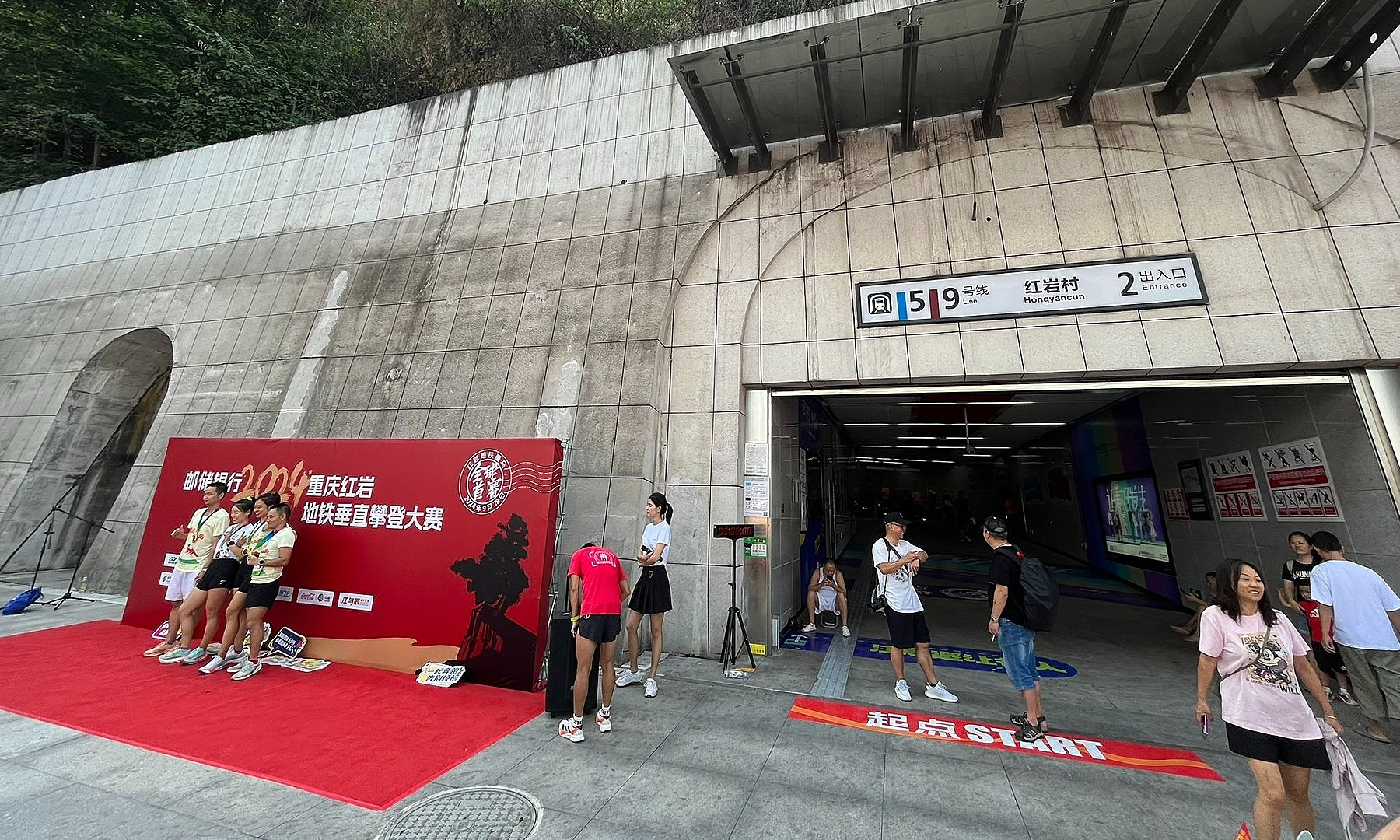 |
Hongyancun Station, at 116 m deep and holding the record for the world's deepest metro station, is another prominent tourist spot. Test videos show that it takes about 8 minutes and seven escalators to ascend from the platform to street level.
Poh Zhenmin, a 28-year-old Malaysian tourist, described the experience of riding the escalators to street level at Hongyancun as exciting. The desire to experience the city's unique lifestyle draws many international visitors. However, Poh admitted he couldn't live there permanently due to the extensive time spent commuting, climbing stairs, and navigating.
"I admire the locals and the strength of their legs," Poh said. Photo: iChongqing
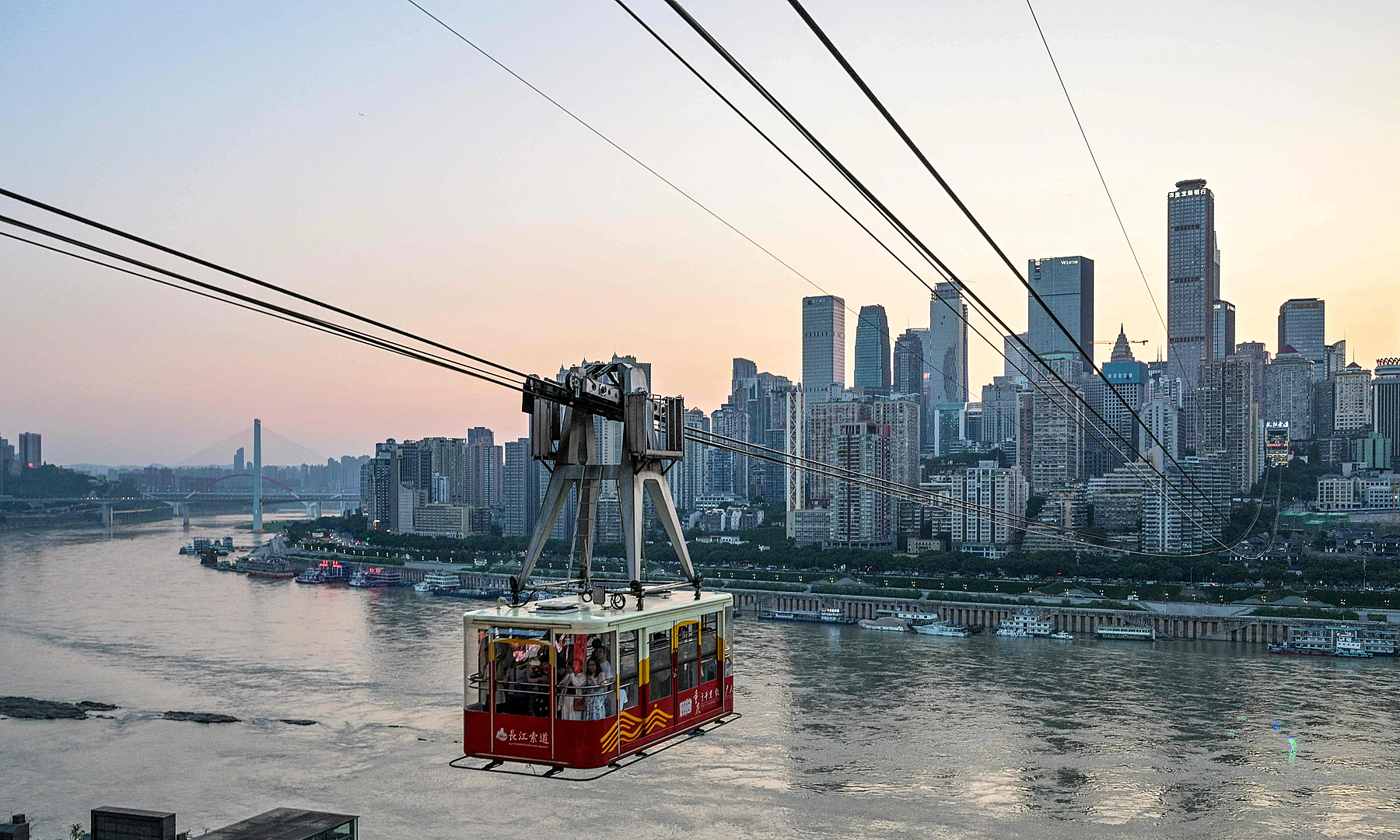 |
A cable car crosses the Yangtze River in Chongqing.
Huang Jun, a taxi driver, expressed pride in the city's history. He loves the local hot pot and specialties and has no desire to leave Chongqing.
"Cities like Beijing are too flat and lack vibrancy," he said. Photo: AFP
 |
Despite separating from Sichuan in 1997, Chongqing's cuisine retains its characteristic spiciness. The city is renowned for its Sichuan peppercorns, so pungent that many visitors approach them with caution. This spice delivers a numbing, slow-burning heat.
Pictured are tourists in traditional Chinese clothing passing a food stall in Chongqing. Photo: AFP
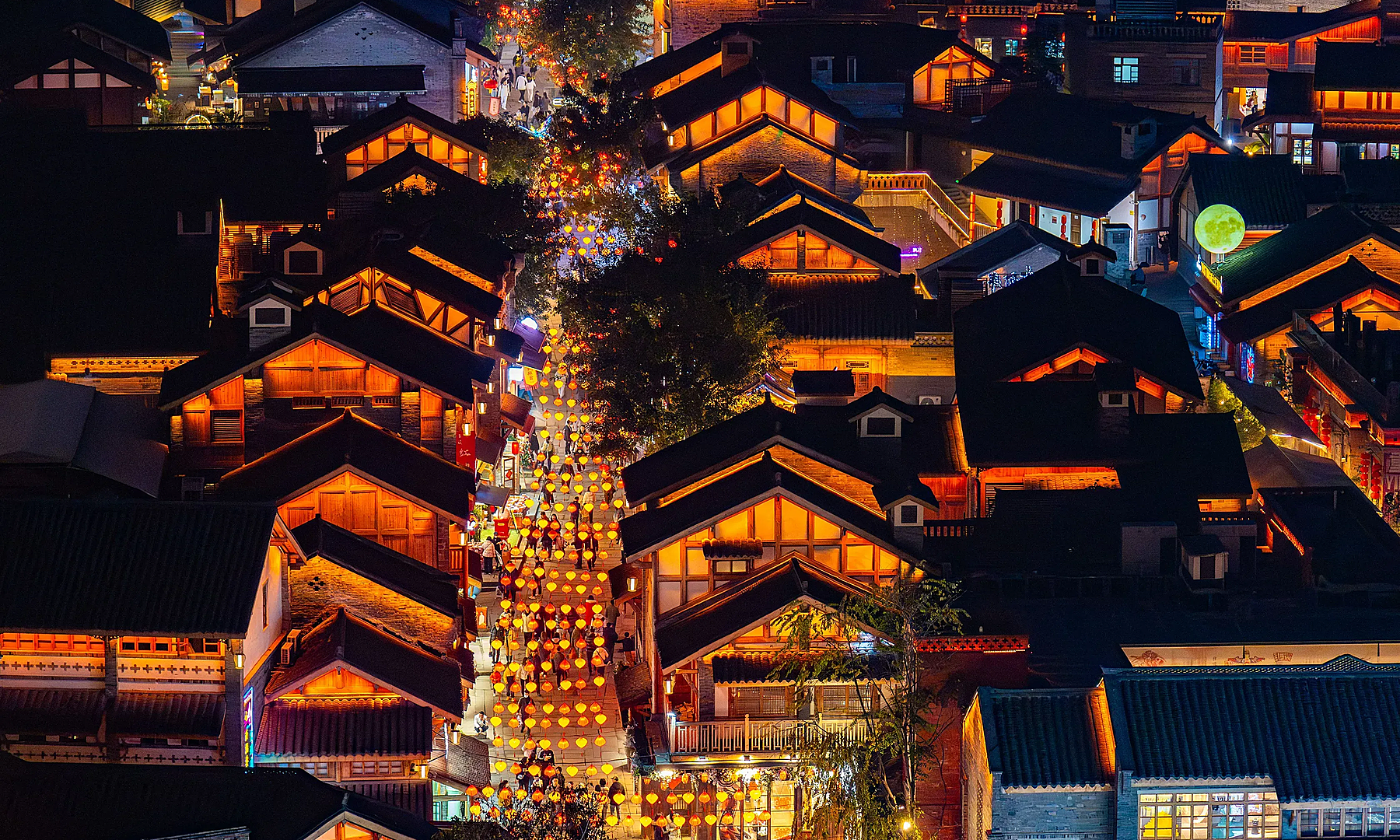 |
Chongqing has transformed from a network of rural towns into a global metropolis. The city has undergone several stages of development with various urban models.
However, this rapid growth has brought the inevitable problems of mid-20th-century cities. Efforts to control pollution are often hampered by inflexible infrastructure. Suburban highways are now engulfed by urban sprawl, creating the surreal image of highways at skyscraper level. Photo: AFP
Hoai Anh (Straits Times, Tomorrow City)



